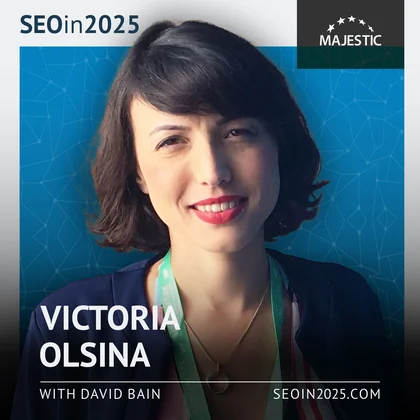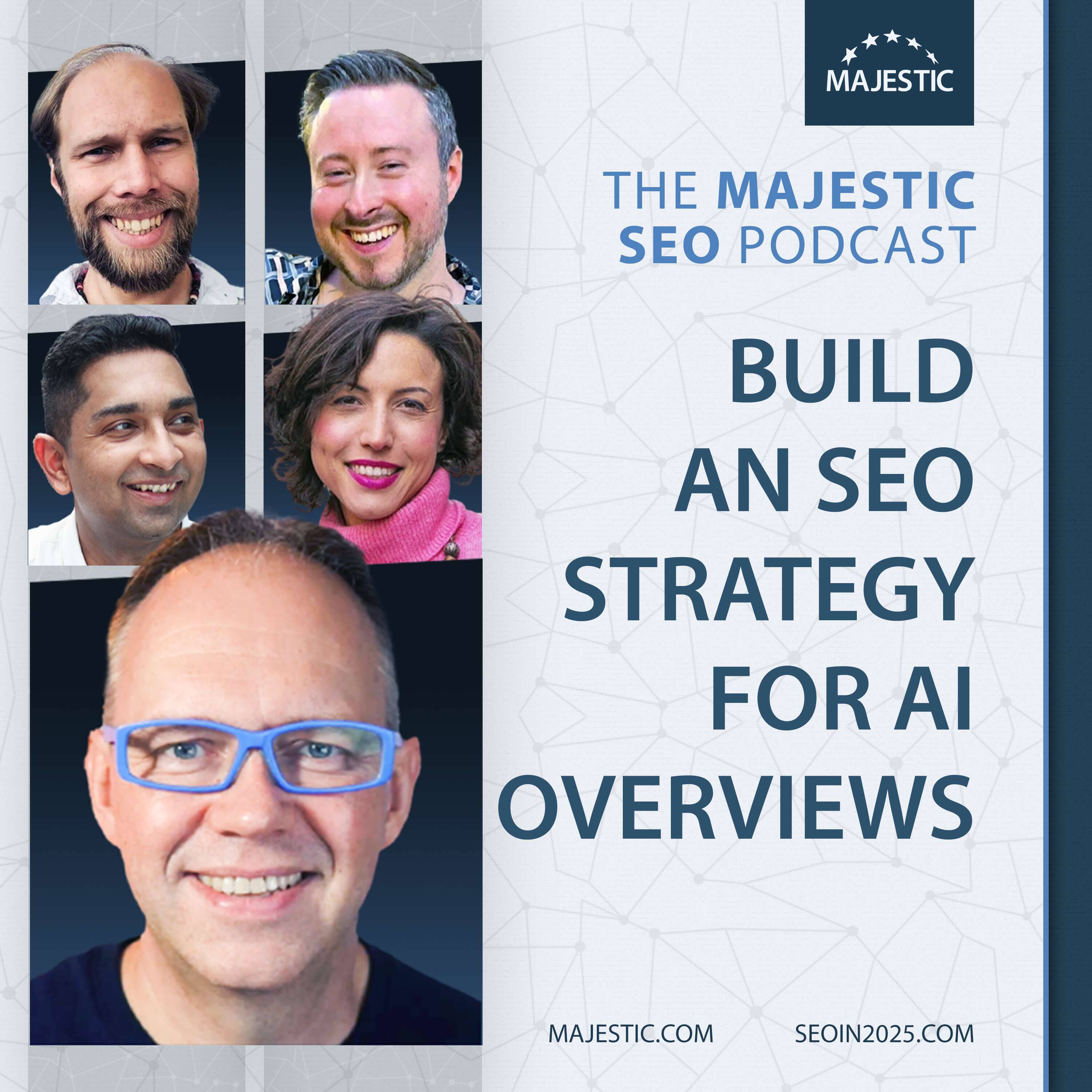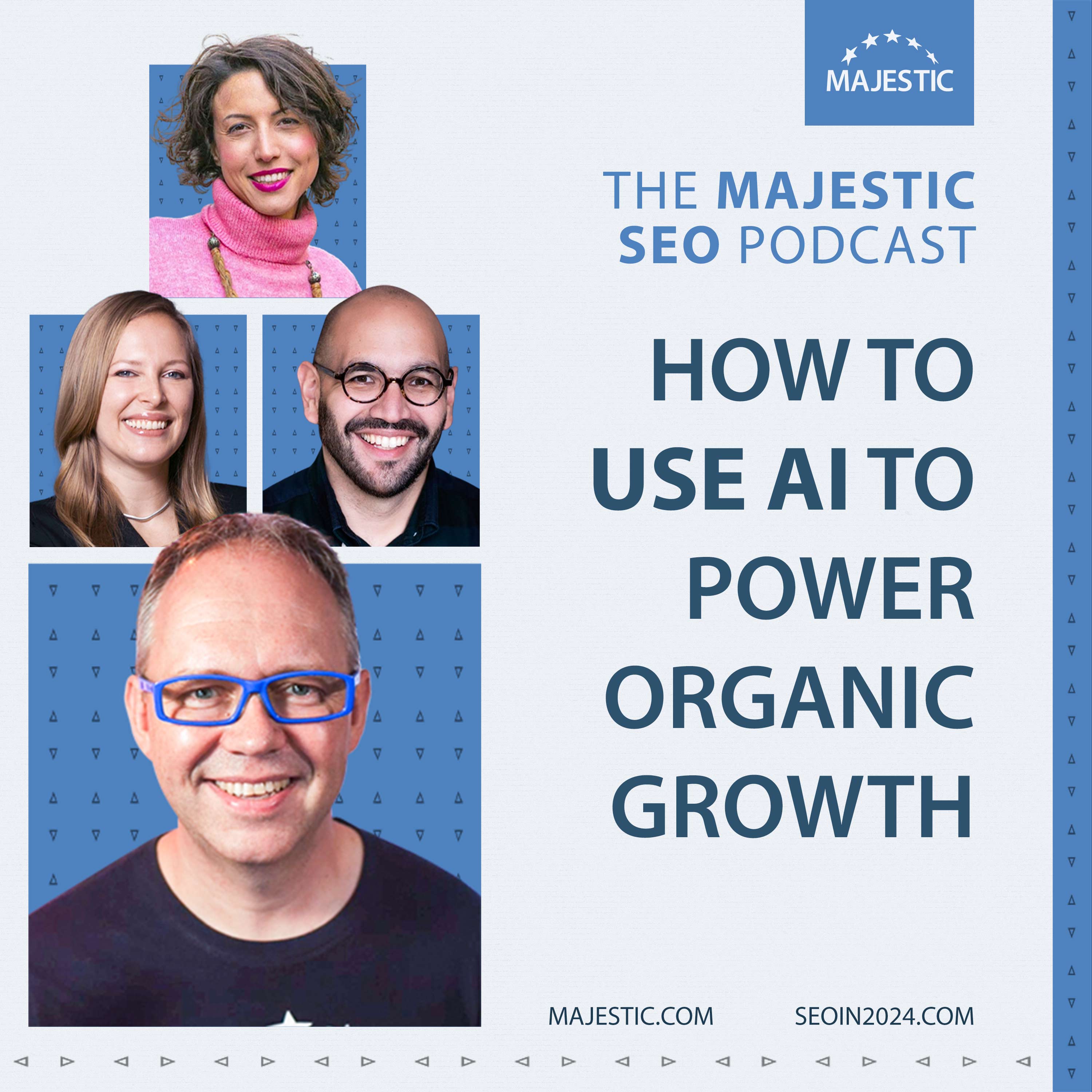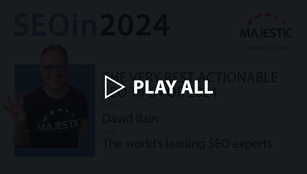-
Site Explorer
- Majestic
- Summary
- Ref Domains
- Backlinks
 New
New Lost
Lost- Context
- Anchor Text
- Pages
- Topics
- Link Graph
- Related Sites
- Advanced Tools
- Author ExplorerBeta
- Summary
- Similar Profiles
- Profile Backlinks
- Attributions
- Compare
-
Link Tools
- My Majestic
- Recent Activity
- Reports
- Campaigns
- Verified Domains
- OpenApps
- API Keys
- Keywords
- Keyword Generator
- Keyword Checker
- Search Explorer
- Link Tools
- Bulk Backlinks
- Neighbourhood Checker
- Submit URLs
- Experimental
- Index Merger
- Link Profile Fight
- Mutual Links
- Solo Links
- PDF Report
- Typo Domain
- Free SEO Tools
- Support
Improve the output from AI by creating custom GPTs for your clients
Victoria Olsina
To lead AI away from generic repetition and towards uniqueness and value, SEO and Growth Consultant Victoria Olsina says that custom GPTs are the way to go.

Improve the output from AI by creating custom GPTs for your clients
Victoria says: “Move beyond just prompts and into creating personalised GPTs for your clients.
When you train a custom GPT on the client’s data, or any data, then that GPT is doing the most important thing – which is getting to know the subject and how that subject talks about specific things. It saves you a lot of time in terms of research and how to write like that person or client.”
Should every SEO agency be doing this?
“I do it for all my clients, so it doesn’t matter if you’re a big or small agency. I specialise in Web3 clients, so crypto, blockchain, etc. – and B2B products, in particular. It’s not crypto consumers, but technologies and development tools for people coding consumer goods.
These are highly specialised topics. I could hire a researcher or start researching myself, but it’s easier to train your own GPT on the client’s data – their branding documents, messaging documents, their own website, their own blog, etc.
You can ask the GPT about the client, instead of asking the client themselves. You can tell it to explain things to you. You can ask what they do, what their products or other services are, and what it thinks would be the best information architecture based on what it now knows about the client.
It’s a much more customised experience for the client. It understands brand voice, but it also understands the client in general, so it’s less likely to produce irrelevant content or hallucinations.
A lot of the time, even if you ask a client what they do better than their competitors or what the benefits of your technology are, 90% of people don’t know how to answer that. GPT does. If you ask, ‘Tell me all of the things that this client sells and all of the features and benefits they offer’, it just does it for you – and it does it better than an actual human, most of the time.”
What are the concerns or issues that you have to watch out for when creating a custom GPT?
“I don’t see any downside.
Let’s say that you create a landing page about the Majestic backlink checker. You can have that page ready in 10 seconds. You have the base structures and you provide something to the GPT, but the GPT has the full body of knowledge about Majestic. If you have downloaded the entire Majestic website and uploaded it into a GPT, that GPT knows everything there is to know about Majestic.”
If the client wants to produce new, additional information, is that something only humans can do?
“You have to have an interview with the client as well, about what their future plans are. What are their most commercially important pages? What is the direction they want to take? Are there any changes that they want to make?
Let’s say that the backlink checker is going to have new features. If I know what those new features are, it will be very easy to write about them using this body of knowledge that we have created in GPT.
I will give you another example. I’m also a stand-up comedian, and I have a GPT that has been trained on all of my material. It’s really hard to write jokes all the time, so I can ask the Victoria Comedy GPT. It’s also really hard to write stuff on LinkedIn all the time, so I have a Victoria SEO GPT with all of the conferences, podcasts, and interviews that I have given.
If I want something to post on LinkedIn about the importance of backlinks today, I can ask it to give me my top 5 quotes from conferences, interviews, etc. – and it will give them to me. I don’t need to remember all of those things.”
Can the ‘Victoria Comedy GPT’ reliably create new jokes that aren’t too similar to jokes you’ve told in the past?
“It has the ability to connect new information with old information. It has even created callbacks that I didn’t recognise. It’s reading all of my material, so it can create a callback to material from 3 years ago where I haven’t realised that there was a direct connection.
It writes in my style. Now, how much of this could I actually use? Maybe 50%. However, it is getting better and better. It’s definitely getting better than me, as a human. It’s good for quick jokes or when you just need another idea.
Comedy also requires a lot of bouncing back and forth with someone, and you can bounce back with it. I can bounce off the AI version of me and say, ‘Make this sharper’, ‘Make this punchier’, etc.
It definitely needs much more human output and tweaking than client content. When I use a GPT to write client content, and an actual writer checks it, the tweaks that the writer makes are changing capital letters, the sentence cases, or changing ‘allow’ to ‘enable’. Those are the changes that an actual human is making. If you want to always change ‘enable’ for ‘allow’, I think you’re in trouble.”
You say that the first step to developing your own GPT, or developing one on behalf of a client, is data collection. Why is that important and what do you do there?
“For me, data collection is the most important step. The quality of the input will define the quality of the output.
It would be very different if the only input I gave a GPT was this interview that we’re having right now, as opposed to if I gave it an entire website about you – a website that says everything you’ve done in your life and has the scripts of all of the podcasts you have done. The output from one will be much better than the other.
The more data you can collect about the client, the better the output will be.”
The next step in your process is training the model, right?
“Yes. This week I have been working on some prompts to train the model, such as what that specific model is supposed to do, what it’s supposed to understand, and how it’s supposed to talk.
Now, when I have a prompt for the GPT, I also ask OpenAI how I can improve that prompt. What is this prompt missing? How could we make it better? That leaves it in a very good state.”
What kind of improvements would the model suggest?
“I sometimes forget whether it’s American English or British English, for example.
Sometimes the clients have feedback, the CTA changes, or the slogan changes. Then, you can input that to the GPT instructions directly rather than making those changes in all of the material. So, you can override rules within the instructions as well.”
Is that part of the next step, which is customisation and fine-tuning the model?
“Yes. Obviously, whatever we are creating will be checked by a human. That human could be a content writer, a marketer, or the client themselves – and they will come back with feedback. Fine-tuning the model could be telling the model what can be corrected, tweaked, or fixed.
You can also download the finalised piece of content and put it back into the training material. The correct output then goes back into the machine once more.”
Your next step is integrating the GPT with tools like content management systems and collaboration systems.
“I’m doing some experiments related to this, with OpenAI Assistants. You can create custom GPTs with OpenAI, and you can also have an AI assistant, which is very similar, but it works on the testing side. It’s known as a sandbox, and the GPTs in a sandbox are called OpenAI Assistants. They’re very similar.
You can connect that to different automation tools, like Make.com, Zapier, or any of those. I’m preparing an experiment right now for that. It is very experimental, so I’m not going to do it with clients, I’m going to do it with my Victoria Comedy GPT.
Basically, I have cloned myself using HeyGen, the AI video generator. Right now, I’m just posting videos of jokes that my custom GPT writes, and then copying and pasting them into the HeyGen AI, but I want this to work autonomously. The experiment that I will be running very shortly is to connect it to a news API.
In the news API, you will have a lot of feeds. The OpenAI Assistant comes in, picks up a topic, writes the jokes in my style, and then sends them to HeyGen. Then, a video is created, and it goes straight to Instagram stories. All of that is joined together with Make.com. Will it be good? Will it be crap? We don’t know, but it will not be monitored. I just want to see what happens.
I’m also going on holiday, so I’m going to leave it making stories on my comedy Instagram to see what happens.”
Is continuous improvement necessary?
“Yes, absolutely. Continuous improvements can come from yourself – from things that you have noticed that are missing – or you can ask ChatGPT how to improve your prompts. You can also collect feedback from the client and the marketing team, and make new prompts from that to refine the model.
There may also be changes. If a client changes their name, or they change something in their branding, you can also incorporate that.”
If an SEO is struggling for time, what should they stop doing right now so they can spend more time doing what you suggest in 2025?
“The value of us as humans is not in the repetitive task anymore.
I have never been a fan of big technical audits. When an audit has more than 10 items, people struggle to implement anything. Nothing gets done. If you see a very long list, with 200 rows in Excel, I don’t think that you’re going to implement most of it.
Keep your technical lists to a maximum of 5-10 items.”
Victoria Olsina is an SEO and Growth Consultant, and you can find her over at VictoriaOlsina.com.
Also with Victoria Olsina
Choose Your Own Learning Style
 Video
Video
If you like to get up-close with your favourite SEO experts, these one-to-one interviews might just be for you.
Watch all of our episodes, FREE, on our dedicated SEO in 2025 playlist.
 Podcast
Podcast
Maybe you are more of a listener than a watcher, or prefer to learn while you commute.
SEO in 2025 is available now via all the usual podcast platforms
Don't miss out
Opt-in to receive email updates.
It's the fastest way to find out more about SEO in 2025.
Could we improve this page for you? Please tell us








